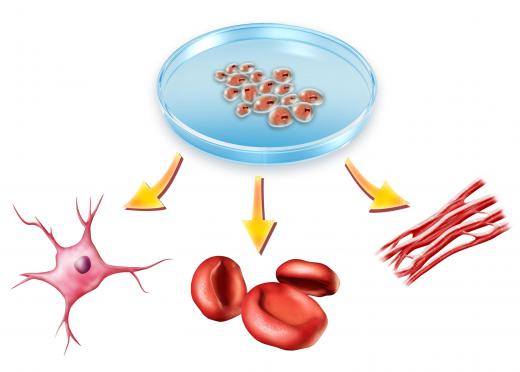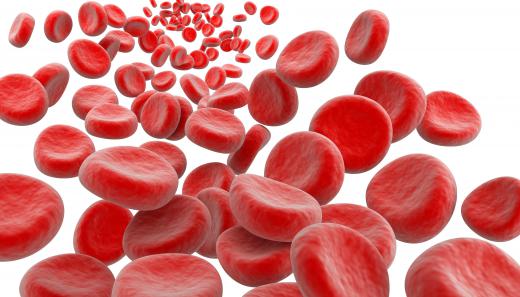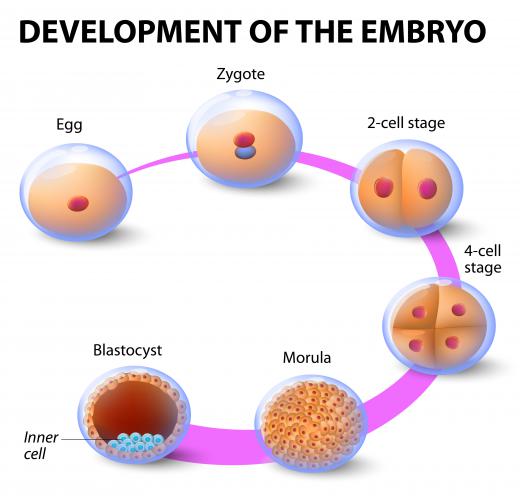What Is Stem Cell Differentiation?
 Mary McMahon
Mary McMahon
Stem cell differentiation is a process where an unspecialized stem cell develops into a particular type of tissue, like a mature red blood cell. This occurs at all stages of life, from very early embryonic development into adulthood, as the body needs a constant supply of new specialized cells to function. Several factors are involved in cellular differentiation, including environmental and biological triggers for various cell types.
The number of different kinds of cells a stem cell can mature into are reflected by its potency. A totipotent cell can develop into any kind of cell at maturity. Such cells are found in the early blastocyst phases of embryonic development, when every cell needs to be able to give rise to a variety of cells for an embryo to develop. As embryonic development progresses, the stem cells become pluripotent in nature, with the ability to diverge into a variety of cell types, but not all.

Multipotent stem cells can differentiate into several related cell types. For example, hematopoietic cells that give rise to different kinds of blood cells can undergo stem cell differentiation to turn into white or red blood cells. They cannot, however, turn into stomach lining or neurons. Multipotent cells of this nature are commonly found in adult organisms to supply continual fresh cells to replace worn and damaged older cells.

In stem cell differentiation, a stem cell receives a signal to start maturing. The cell may pass through several life stages before it becomes a mature cell. At any stage, an error can occur, and the cell may become misshapen or can develop other problems. The immune system remains watchful for such cells so it can intervene to destroy them and recycle their components before they have an opportunity to fully develop and cause problems. The body constantly needs new blood and skin cells, among others, and relies on stem cell differentiation to meet this need.

Scientific researchers have a particular interest in embryonic stem cell differentiation because of their totipotent and pluripotent properties. They study embryonic development to learn more about how cells mature and the order in which various structures occur as an embryo develops. This can provide important information about birth defects, as well as the biological history of an organism. Many organisms display parallel embryonic development until a certain stage, where they start to look radically different, just like fully mature specimens of different species. These similarities in development can hint at the evolutionary history of various organisms.
AS FEATURED ON:
AS FEATURED ON:
















Discuss this Article
Post your comments